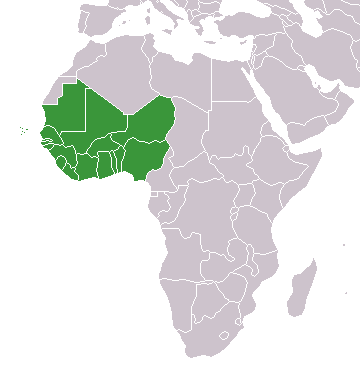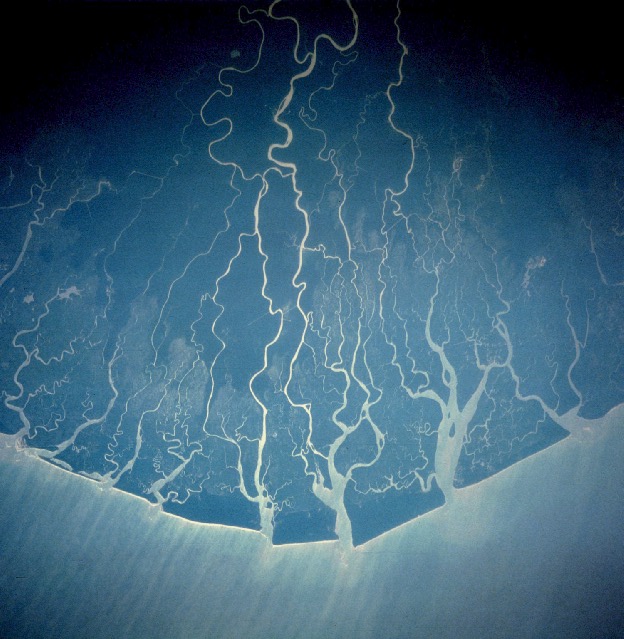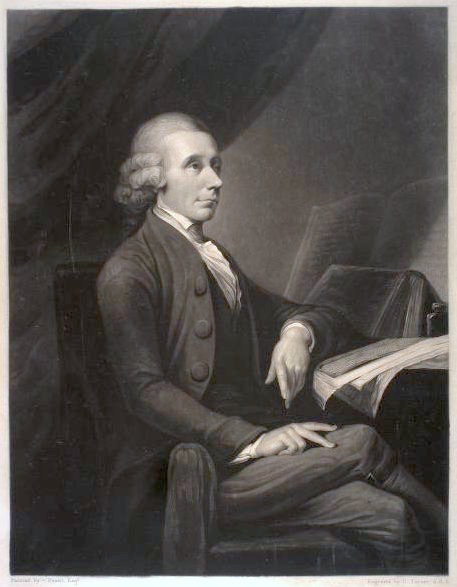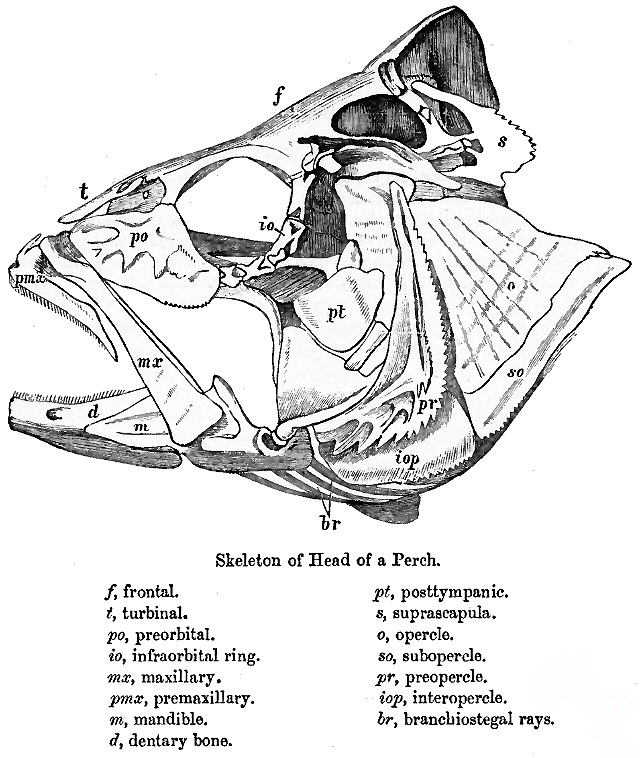|
Papyrocranus Afer
The reticulated knifefish (''Papyrocranus afer'') is a species of freshwater fish in the family Notopteridae, the featherbacks, found in tropical West Africa. It reaches a maximum length of and a reported weight of . Description The reticulated knifefish usually grows to a length of about . It is laterally flattened and has very small scales. Like other featherbacks, the dorsal fin projects from its back rather like a feather; this fin has no spines and just two soft rays. The fish has an elongated anal fin with no spines and between 113 and 141 soft rays. This is united with the small caudal fin. There are no pelvic fins. The anal fin provides propulsion, either forwards or backwards, undulating from side to side with a rippling movement. Distribution This fish is native to tropical West Africa. It occurs in the Niger basin and other coastal river basins including the Tano River and Pra River basins in Ghana, and the Cross River and Sanaga River basins to the east of the Niger ... [...More Info...] [...Related Items...] OR: [Wikipedia] [Google] [Baidu] |
Albert Günther
Albert Karl Ludwig Gotthilf Günther Fellow of the Royal Society, FRS, also Albert Charles Lewis Gotthilf Günther (3 October 1830 – 1 February 1914), was a German-born British zoologist, ichthyologist, and herpetologist. Günther is ranked the second-most productive reptile taxonomist (after George Albert Boulenger) with more than 340 reptile species described. Early life and career Günther was born in Esslingen am Neckar, Esslingen in Swabia (Württemberg). His father was a ''Stiftungs-Commissar'' in Esslingen and his mother was Eleonora Nagel. He initially schooled at the Stuttgart Gymnasium. His family wished him to train for the ministry of the Lutheran Church for which he moved to the University of Tübingen. A brother shifted from theology to medicine, and he, too, turned to science and medicine at Tübingen in 1852. His first work was "''Ueber den Puppenzustand eines Distoma''". He graduated in medicine with an M.D. from Tübingen in 1858, the same year in which he pub ... [...More Info...] [...Related Items...] OR: [Wikipedia] [Google] [Baidu] |
Notopteridae
The family Notopteridae contains 10 species of osteoglossiform (bony-tongued) fishes, commonly known as featherbacks and knifefishes. These fishes live in freshwater or brackish environments in Africa and South and Southeast Asia. With the denotation of "knifefish", the notopterids should not be confused with Gymnotiformes, the electric knifefishes from South and Central America. Although their manner of swimming is similar and they are superficially similar in appearance, the two groups are not closely related. A few of the larger species, especially ''Chitala ornata'', are food fish and occasionally aquarium pets. The name is from Greek ''noton'' meaning "back" and ''pteron'' meaning "fin". Fossils The earliest fossils of this family are of '' Notopteridarum'' and '' Notopterus'' from the Late Cretaceous of India, about 70.6 to 66 million years ago. These fossils originate from the Rangapur microvertebrate site and Naskal microvertebrate site of Andhra Pradesh, which are pa ... [...More Info...] [...Related Items...] OR: [Wikipedia] [Google] [Baidu] |
West Africa
West Africa or Western Africa is the westernmost region of Africa. The United Nations defines Western Africa as the 16 countries of Benin, Burkina Faso, Cape Verde, The Gambia, Ghana, Guinea, Guinea-Bissau, Ivory Coast, Liberia, Mali, Mauritania, Niger, Nigeria, Senegal, Sierra Leone, and Togo, as well as Saint Helena, Ascension and Tristan da Cunha ( United Kingdom Overseas Territory).Paul R. Masson, Catherine Anne Pattillo, "Monetary union in West Africa (ECOWAS): is it desirable and how could it be achieved?" (Introduction). International Monetary Fund, 2001. The population of West Africa is estimated at about million people as of , and at 381,981,000 as of 2017, of which 189,672,000 are female and 192,309,000 male. The region is demographically and economically one of the fastest growing on the African continent. Early history in West Africa included a number of prominent regional powers that dominated different parts of both the coastal and internal trade networ ... [...More Info...] [...Related Items...] OR: [Wikipedia] [Google] [Baidu] |
Niger
) , official_languages = , languages_type = National languagesRépublique du Niger, "Loi n° 2001-037 du 31 décembre 2001 fixant les modalités de promotion et de développement des langues nationales." L'aménagement linguistique dans le monde (accessed 21 September 2016) , languages = , religion_ref = , religion_year = 2012 , religion = , demonym = Nigerien , capital = Niamey , coordinates = , largest_city = Niamey , government_type = Unitary state, Unitary Semi-presidential s ... [...More Info...] [...Related Items...] OR: [Wikipedia] [Google] [Baidu] |
Tano River
The Tano or Tanoé River is a river in Ghana. It flows for 400 kilometres from a town called Traa a suburb of Techiman the capital town of Bono East Region of the Republic of Ghana to Ehy Lagoon, Tendo Lagoon and finally Aby Lagoon in Ivory Coast where it enters the Atlantic Ocean. The river forms the last few kilometres of the international land boundary between Ghana and Ivory Coast.Tano Basin . ''Water Resources Commission of Ghana''. Indigious local beliefs of hold that Taakora, the highest of the [...More Info...] [...Related Items...] OR: [Wikipedia] [Google] [Baidu] |
Pra River (Ghana)
The Pra River is a river in Ghana, the easternmost and the largest of the three principal rivers that drain the area south of the Volta divide. Rising in the Kwahu Plateau near Mpraeso and flowing southward for 240 km through rich cocoa and farming areas and valuable forests in the Akan lowlands, the Pra enters the Gulf of Guinea east of Takoradi. In the 19th century, the Pra served as the border between the Ashanti Confederacy and the Gold Coast. The Pra has many cataracts, notably the Bosomasi Rapids at Anyinabrim, and for most of its length is not navigable even by canoe. However, in the early part of the twentieth century the Pra was used extensively to float timber to the coast for export. This trade is now carried by road and rail transportation. The main tributaries are the Ofin, Anum and Birim rivers. The northern part of the Pra is still worked for artisan gold with metallic mercury, which has caused some contamination. The Birim river valley is a major source ... [...More Info...] [...Related Items...] OR: [Wikipedia] [Google] [Baidu] |
Cross River (Nigeria)
Cross River (native name: Oyono) is the main river in southeastern Nigeria and gives its name to Cross River State. It originates in Cameroon, where it takes the name of the Manyu River. Although not long by African standards its catchment has high rainfall and it becomes very wide. Over its last to the sea it flows through swampy rainforest with numerous creeks and forms an inland delta near its confluence with the Calabar River, about wide and long between the cities of Oron on the west bank and Calabar, on the east bank, more than from the open sea. The delta empties into a broad estuary which it shares with a few smaller rivers. At its mouth in the Atlantic Ocean, the estuary is wide. The eastern side of the estuary is in the neighbouring country of Cameroon. The major tributary of Cross river is the river Aloma coming from Benue State to merge with the Cross River in Cross River State. Cross River State is connected with a major highway to its sister state Akwa I ... [...More Info...] [...Related Items...] OR: [Wikipedia] [Google] [Baidu] |
Sanaga River
The Sanaga River (formerly german: Zannaga) is the largest river in Cameroon located in East Region, Centre Region and Littoral Region. Its length is about from the confluence of Djérem and Lom River. The total length of Sanaga-Djérem River system is about . Djerem is the longest source of Sanaga River with a total length of 464.5 km. Course The Sanaga River has its Source at the Adamawa Plateau. It is formed by the confluence of the Djérem River and Lom River in the north of the East Region. Djérem River has a total length of and Lom River has a total length of . Apart from those originating rivers, the largest tributary of Sanaga is Mbam River with a total length of . Climate The Sanaga River forms a boundary between two tropical moist forest ecoregions. The Cross-Sanaga-Bioko coastal forests lie to the north between the Sanaga River and the Cross River of Nigeria, and the Atlantic Equatorial coastal forests extend south of the river through southwes ... [...More Info...] [...Related Items...] OR: [Wikipedia] [Google] [Baidu] |
Niger Delta
The Niger Delta is the delta of the Niger River sitting directly on the Gulf of Guinea on the Atlantic Ocean in Nigeria. It is located within nine coastal southern Nigerian states, which include: all six states from the South South geopolitical zone, one state ( Ondo) from South West geopolitical zone and two states ( Abia and Imo) from South East geopolitical zone. The Niger Delta is a very densely populated region sometimes called the Oil Rivers because it was once a major producer of palm oil. The area was the British Oil Rivers Protectorate from 1885 until 1893, when it was expanded and became the Niger Coast Protectorate. The delta is a petroleum-rich region and has been the center of international concern over pollution that has resulted principally from major oil spills of multinational corporations of the petroleum industry. Geography The Niger Delta, as now defined officially by the Nigerian government, extends over about and makes up 7.5% of Nigeria's land ... [...More Info...] [...Related Items...] OR: [Wikipedia] [Google] [Baidu] |
Swim Bladder
The swim bladder, gas bladder, fish maw, or air bladder is an internal gas-filled organ that contributes to the ability of many bony fish (but not cartilaginous fish) to control their buoyancy, and thus to stay at their current water depth without having to expend energy in swimming. Also, the dorsal position of the swim bladder means the center of mass is below the center of volume, allowing it to act as a stabilizing agent. Additionally, the swim bladder functions as a resonating chamber, to produce or receive sound. The swim bladder is evolutionarily homologous to the lungs. Charles Darwin remarked upon this in ''On the Origin of Species''.Darwin, Charles (1859''Origin of Species''Page 190, reprinted 1872 by D. Appleton. Darwin reasoned that the lung in air-breathing vertebrates had derived from a more primitive swim bladder. In the embryonic stages, some species, such as redlip blenny, have lost the swim bladder again, mostly bottom dwellers like the weather fish ... [...More Info...] [...Related Items...] OR: [Wikipedia] [Google] [Baidu] |
Oxygen
Oxygen is the chemical element with the symbol O and atomic number 8. It is a member of the chalcogen group in the periodic table, a highly reactive nonmetal, and an oxidizing agent that readily forms oxides with most elements as well as with other compounds. Oxygen is Earth's most abundant element, and after hydrogen and helium, it is the third-most abundant element in the universe. At standard temperature and pressure, two atoms of the element bind to form dioxygen, a colorless and odorless diatomic gas with the formula . Diatomic oxygen gas currently constitutes 20.95% of the Earth's atmosphere, though this has changed considerably over long periods of time. Oxygen makes up almost half of the Earth's crust in the form of oxides.Atkins, P.; Jones, L.; Laverman, L. (2016).''Chemical Principles'', 7th edition. Freeman. Many major classes of organic molecules in living organisms contain oxygen atoms, such as proteins, nucleic acids, carbohydrates, and fats ... [...More Info...] [...Related Items...] OR: [Wikipedia] [Google] [Baidu] |
Teleost
Teleostei (; Greek ''teleios'' "complete" + ''osteon'' "bone"), members of which are known as teleosts ), is, by far, the largest infraclass in the class Actinopterygii, the ray-finned fishes, containing 96% of all extant species of fish. Teleosts are arranged into about 40 orders and 448 families. Over 26,000 species have been described. Teleosts range from giant oarfish measuring or more, and ocean sunfish weighing over , to the minute male anglerfish '' Photocorynus spiniceps'', just long. Including not only torpedo-shaped fish built for speed, teleosts can be flattened vertically or horizontally, be elongated cylinders or take specialised shapes as in anglerfish and seahorses. The difference between teleosts and other bony fish lies mainly in their jaw bones; teleosts have a movable premaxilla and corresponding modifications in the jaw musculature which make it possible for them to protrude their jaws outwards from the mouth. This is of great advantage, enabling them ... [...More Info...] [...Related Items...] OR: [Wikipedia] [Google] [Baidu] |






